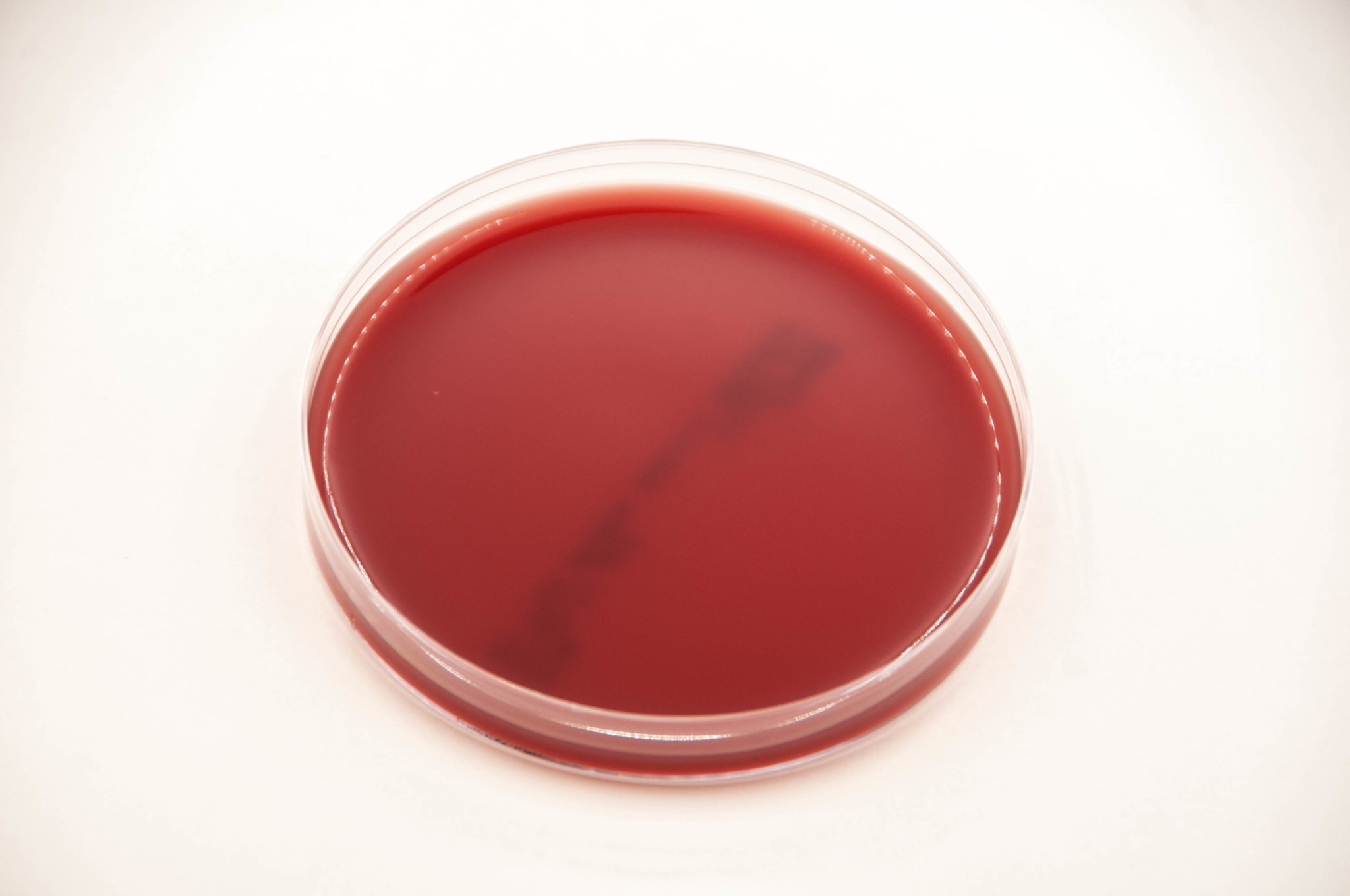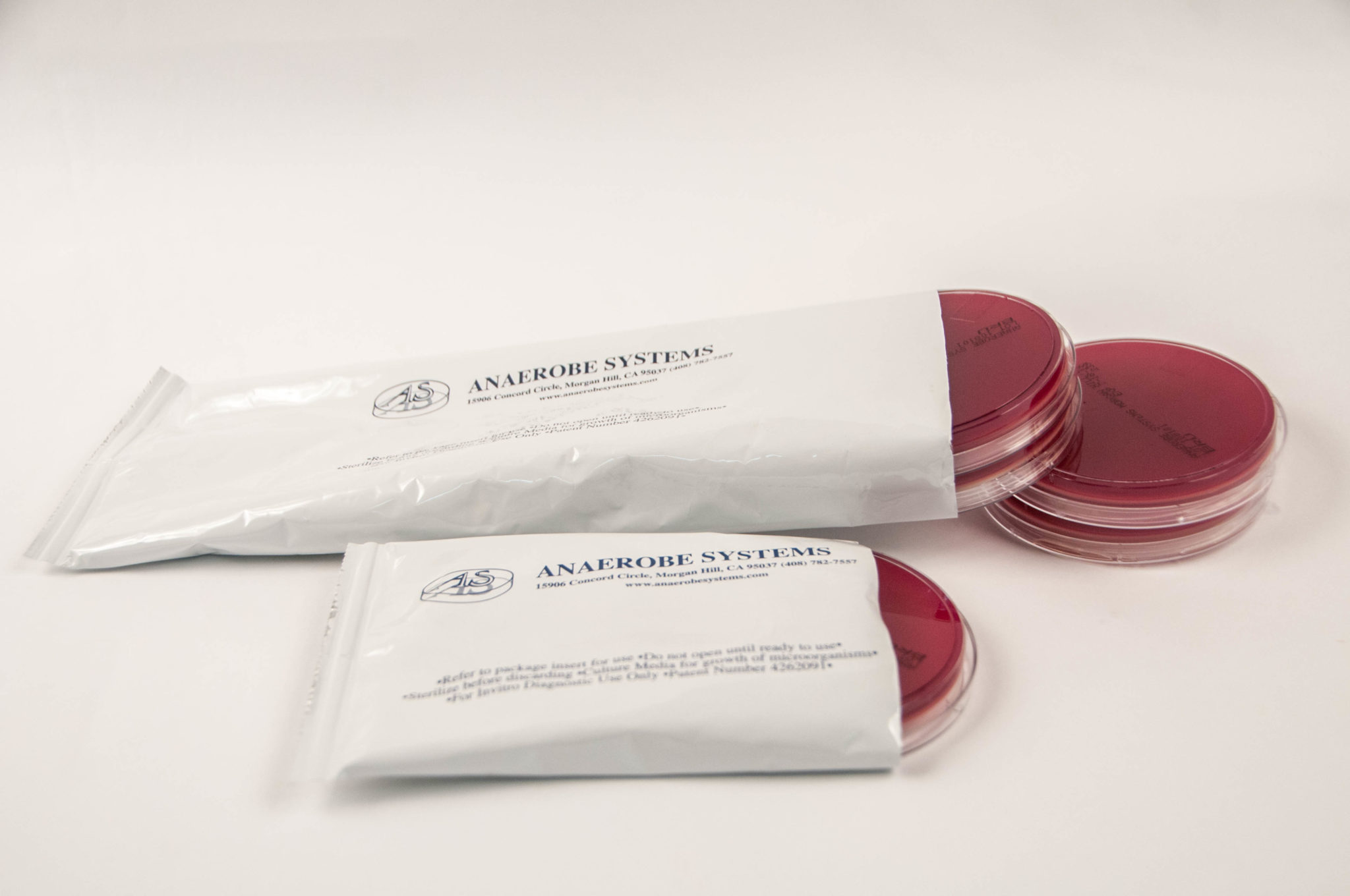Brucella Blood agar (BRU) is intended for the isolation, quantitation, and partial identification of obligate anaerobic bacteria from clinical specimens. This media will also support the growth of aerobic and microaerophilic bacteria if incubated appropriately. BRU is also suitable for use in antibiotic differential disk examination and spot biochemical testing.
Brucella Blood Agar – BRU
| Item # | Description | Size | Price |
| AS-111 | BRU mono plate | 1 plate | $2.88 |
| AS-141 | BRU mono plate | 4 plates | $10.12 |
| AS-614 | BRU 150mm plate (certified depth 4mm ±0.5mm) | 1 plate | $5.39 |
Product Description & Summary
BRU agar is an enriched non-selective media that supports the growth of fastidious microorganisms. BRU agar contains casein, peptones, yeast extract, and dextrose as the nutrient base medium. It is supplemented with vitamin K1 and hemin to facilitate the recovery and pigment production of Prevotella melaninogenica, and other fastidious anaerobes. Sheep blood has been added for the growth factors required by some anaerobic bacteria, and allows the observation of hemolytic reactions as seen by the double zone β-hemolysis of Clostridium perfringens. This media is prepared, dispensed, and packaged under oxygen-free conditions to prevent the formation of oxidized products prior to use.
Interpretation of Results & Limitations
BRU agar should support good growth of obligate anaerobes and other fastidious microorganisms found in clinical infections. In addition, this media should support typical pigment production by Prevotella melaninogenica and typical double zone of β-hemolysis around colonies of Clostridium perfringens.
BRU agar will not provide complete information for identification of bacterial isolates. Additional test procedures and media are required for complete identification. In some cases, BRU agar may be overgrown with swarming Proteus spp. or Clostridium spp. It is recommended that selective media such as Brucella Laked Blood Agar with Kanamycin and Vancomycin (LKV, catalog #: AS-112) and/or Brucella Blood Agar with Phenylethyl Alcohol (PEA, catalog #: AS-113) also be inoculated from clinical specimens to prevent such overgrowth and thus provide isolated colonies. Consult reference materials for additional information.
Quality Control
The following organisms are routinely used for quality control testing at Anaerobe Systems.
| Organism Tested | ATCC # | Results | Time | Special Reaction |
| Bacteroides fragilis* | 25285 | Growth | 24 hrs | |
| Prevotella melaninogenica* | 25845 | Growth | 24 – 48 hrs | Pigmentt (tan color) |
| Fusobacterium necrophorum | 25286 | Growth | 24 hrs | |
| Fusobacterium nucleatum* | 25586 | Growth | 24 hrs | |
| Clostridium perfringens* | 13124 | Growth | 24 hrs | Double Zone of β-hemolysis |
| Peptostreptococcus anaerobius* | 27337 | Growth | 24 hrs | |
| Staphylococcus aureus or Enterococcus faecalis | 25923 29212 | Growth | 24 hrs | |
| Escherichia coli | 25922 | Growth | 24 hrs | |
| Proteus mirabilis | 12453 | Growth | 24 hrs | |
| Propionibacterium acnes or Clostridium difficile | 6919 9689 | Growth | 24 – 48 hrs
24 hrs |
* Organisms specified by CLSI for Quality Control testing of Anaerobic Blood Agars.
t Pigment production may require more than 48 hours of incubation
Product Storage & Shelf Life
Storage: Upon receipt, store at room temperature in original package until used. Avoid overheating or freezing. Do not use media if there are signs of deterioration (shrinking, cracking, or discoloration due to oxidation of media) or contamination. The expiration date applies to the product in its original packaging and stored as directed. Do not use product past the expiration date shown on the label.
Shelf Life: 90 days from date of manufacture.




